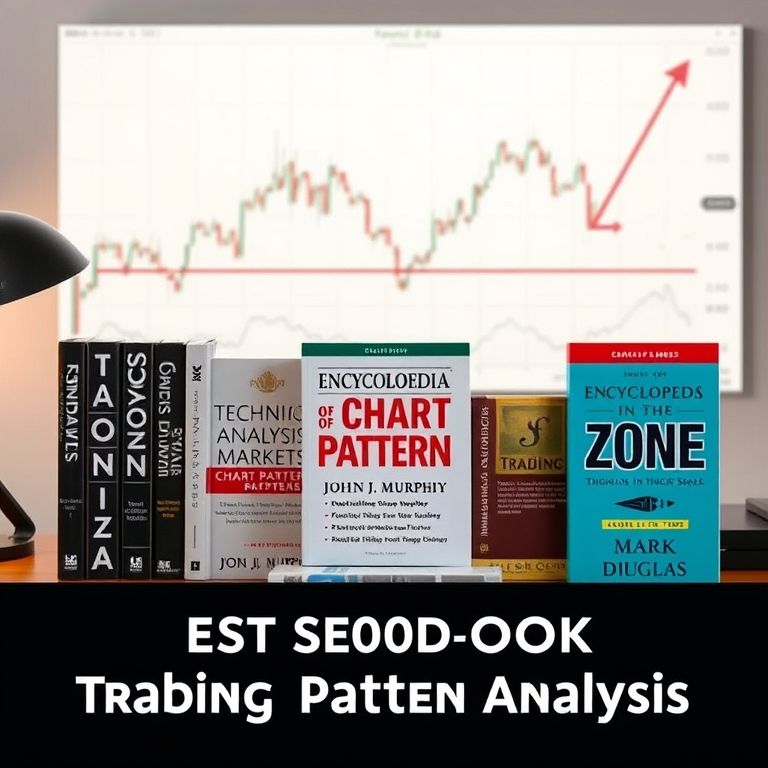Best books to learn trading pattern analysis
h1 Best books to learn trading pattern analysis
Introductory note: If you’re jumping into pattern analysis to trade across forex, stocks, crypto, indices, options, or commodities, a solid library is your compass. These books translate cluttered price action into repeatable setups, risk-aware decisions, and a calmer mind when markets get noisy. Think of them as a practical toolkit you can test in real markets, not just theory.

What you’ll gain from solid pattern books
- Pattern catalogs that actually work: A dependable guide helps you recognize recurring formations like head-and-shoulders, double tops/bottoms, and cup-with-handle, plus how they tend to play out in different contexts. Real-world examples from the authors show what confluence looks like in live charts.
- Price action plus psychology: You’ll see how price behavior pairs with trader psychology, so you’re not chasing every flash in the pan. The best reads pair chart patterns with mental discipline and disciplined risk controls.
- Multi-asset insights: Well-regarded texts explain how patterns behave differently on forex versus equities, or in crypto versus commodities, so you aren’t applying a one-size-fits-all rulebook.
Top picks and core takeaways
- Technical Analysis of the Financial Markets — a broad, seasoned view of chart patterns, indicators, and timeframes. It helps you build a layered approach: a pattern plus a momentum cue plus a support/resistance anchor.
- Japanese Candlestick Charting Techniques — masterful on candlestick signals, with clear demos that translate to timing entries and exits across markets.
- Encyclopedia of Chart Patterns — a catalog-style reference that gives you pattern statistics and expectations, useful for backtesting ideas and calibrating risk.
- Reading Price Charts Bar by Bar — sharp focus on price action without over-reliance on indicators, ideal for traders who want to trust what the chart is saying in the moment.
- Volume Price Analysis (Anna Coulling) — shows how volume can confirm or negate a pattern, adding a critical layer of robustness when liquidity shifts.
- Trading in the Zone and Trading for a Living — introduce the human side: discipline, emotional control, and how to fit a pattern edge into your daily routine.
Asset classes and practical notes
- Forex and indices respond well to clear confluence: a pattern aligned with a volume tilt and a key support zone often leads to more reliable entries.
- Stocks and options demand awareness of earnings, splits, and news that can override technicals; patterns still help, but with tighter risk management.
- Crypto and commodities can give clearer early pattern signals during trending phases, yet can be fragile in whipsawing markets—so keep position sizing conservative until patterns prove themselves.
- Real-world example: a trader spotted a cup-with-handle on a high-volume bullish flag in a liquid stock, waited for a breakout above the handle with increasing volume, and managed risk with a tight stop. It wasn’t magic; it was pattern confluence plus disciplined execution.
Reliability tips and strategy ideas
- Backtest conscientiously: simulate across different markets and timeframes to see where a pattern holds up.
- Seek confluence: combine pattern signals with volume, trend context, and support/resistance zones.
- Journal and review: note what worked, what didn’t, and how you handled risk in each trade.
- Risk first: fixed fractional sizing, defined stop losses, and a plan for partial exits when price action falters.
DeFi, future trends, and prop trading outlook
- Go-to-market dynamics: decentralized finance is expanding pattern-driven risk management in smart contracts, but reliability hinges on oracle integrity, liquidity, and contract audits.
- Smart contracts and AI: expect more automatic pattern recognition, backtesting in the cloud, and AI-assisted risk controls that preserve human oversight.
- Prop trading prospects: firms increasingly value pattern-based strategies tied to rigorous risk controls and data-backed edge. Access to capital often comes with disciplined playbooks, not hype.
- Slogan worth repeating: Learn the patterns, master the markets. Your edge begins with the books you choose and the discipline you bring to the chart.
If you’re aiming to build a credible pattern-spotting skill set, these titles form a sturdy backbone. They bridge timeless chart wisdom with modern trading realities, helping you navigate a world where pattern analysis sits at the crossroads of experience, technology, and risk-aware decision making.